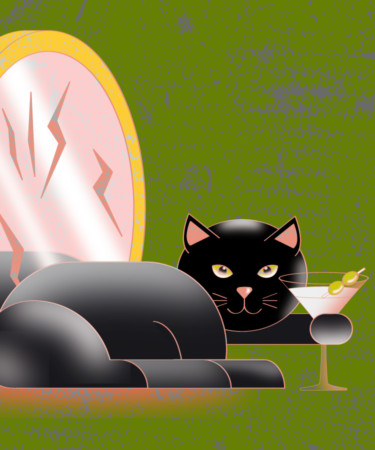There have been countless iterations of the Martini since the mid-19th century. Though in its early days, the cocktail was much sweeter than what we know today — with syrups and even cherries added to the mix — it wasn’t until decades later that olives became synonymous with Martinis.
As the story goes, New York bartender John O’Connor was playing around with ingredients for a dry Martini one night in 1901. Searching through items around the bar, he added an olive and brine to the drink, creating what we now know as a Dirty Martini.
During Prohibition, gin gained popularity as the easiest spirit to produce under the newly proposed 18th Amendment. Americans began experimenting at home, making simple cocktails like the Martini with higher amounts of gin, as that’s what was available at the time.
Despite the Martini’s rapid rise in the cocktail scene, olives were never formally used in the recipe until 1930, when G.H. Steele authored “My New Cocktail Book,” which featured a drink entitled “Perfect, à la Hyland.” Suspiciously similar to the classic Martini, this cocktail consisted of gin, vodka, vermouth, and a half-teaspoon of olive brine.
By the time Prohibition was repealed in 1933, the gin in an average Martini heavily out-ratioed vermouth. What the drink needed was a simple garnish that could soak up the spirit.
FDR, who repealed Prohibition, regarded the Dirty Martini as his go-to drink: 2:1 gin and vermouth, olive brine, and an olive to top it off — a variation he would later introduce to other famous leaders such as Winston Churchil and Joseph Stalin. Olives and Martinis have gone hand in hand ever since.
But why an olive? Not only is it an aesthetic addition to any Martini glass, but it doubles as a salty treat. When a Martini is served with three olives on a toothpick, seasoned drinkers might enjoy one with the first sip. The rest are consumed once the drink is finished.
For such a simple garnish, the olive is subject to one simple rule: The olives topping Martinis must always be in groups of three or singular.
An unspoken superstition deems an even number of olives bad luck. Like avoiding a black cat in an alleyway, most seasoned bartenders will only serve Martinis with one or three olives (never two or four). The origins of this superstition remain a mystery, but are adamantly followed.
“High tradition dictates that you must use an odd number of olives. One olive is fine; so are three (five is excessive). Using two or four olives is a faux pas,” writes Brad Gadberry in the famed “Martini FAQ.”
Some point to an Italian superstition, which considers anything served in even numbers “bad hospitality and unlucky.” Coffee beans in Sambuca and Espresso Martinis are always served in threes, so perhaps the Martini follows suit with olives.
Either way, the Martini has cemented its legacy in cocktail culture alongside its most notable garnish: the olive. And as the wise Trapper John explained on “M*A*S*H“: “You really can’t savor a Martini without an olive, you know. You see otherwise, it just doesn’t… quite… make it.”
